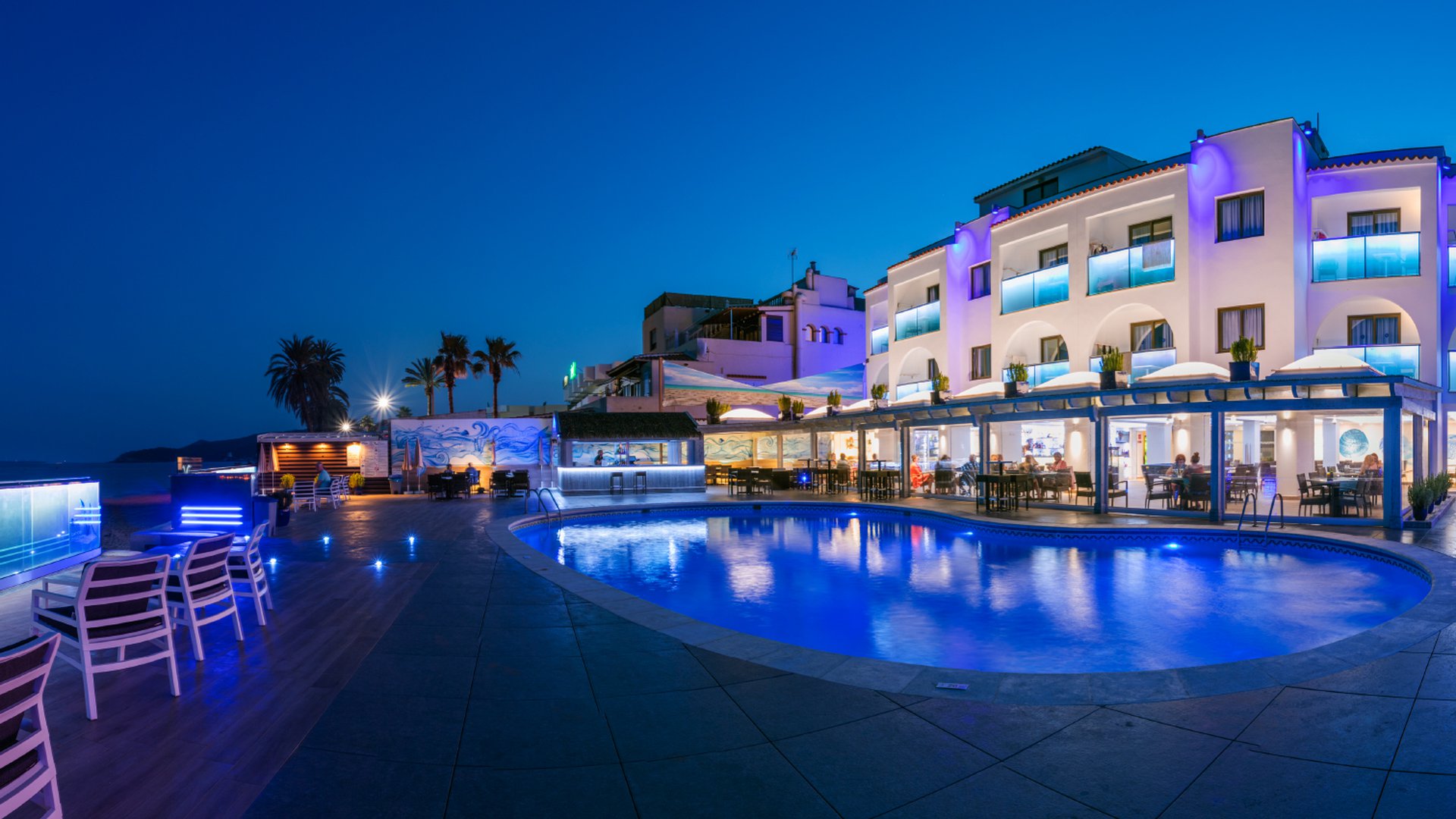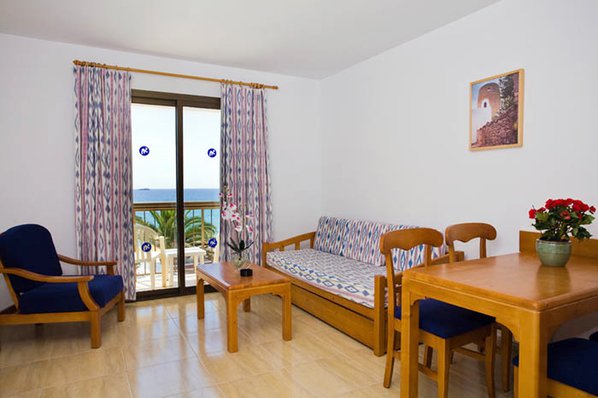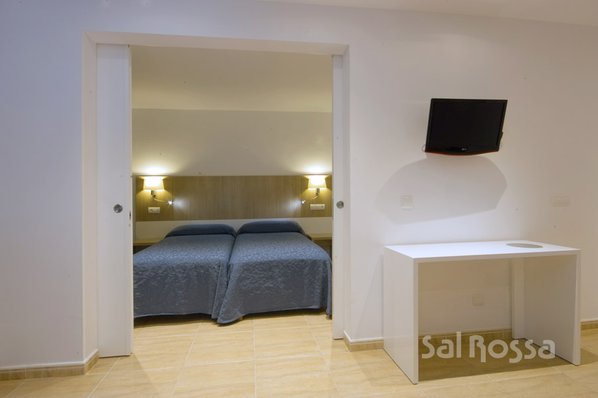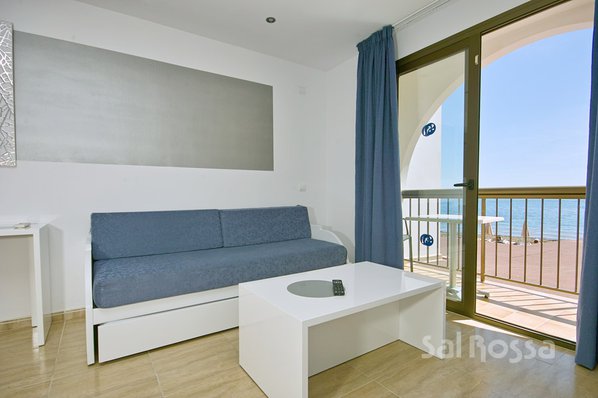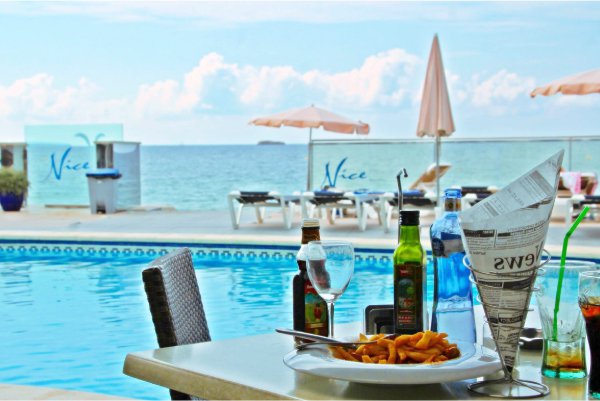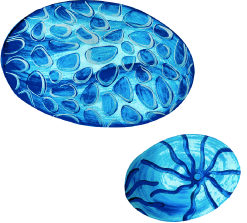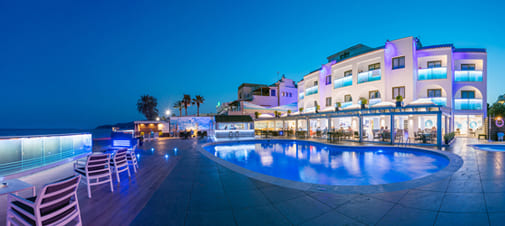Welcome to
Apartamentos Sal Rossa
Fancy an amazing holiday in Ibiza with your partner, family or friends?
Welcome to the official website of Sal Rossa Apartments, fully equipped with everything you may need during your stay and a stone's throw away from Ibiza's longest beach, Playa d'en Bossa.
Accommodation in the heart of Playa d'en Bossa
Our apartments are located on a small complex with a laid-back and family-friendly atmosphere. Spread over a three-storey U-shaped building, they're comfortable, functional and very bright. They can sleep three adults or two adults and two children, and all have a double bedroom, ensuite bathroom, living room with additional sofa bed, fully equipped kitchenette, and a terrace overlooking the gardens, a neighbouring hotel, the pool or the sea. We also have recently refurbished superior apartments, some of them with a fabulous terrace with full-on views of the beach.
Facilities and services at Sal Rossa Apartments
Quality facilities and services so that you can enjoy a wonderful holiday in Ibiza. On our apartment complex you'll find extensive landscaped areas, a pool with water jets and waterfall, a sun deck with loungers, a bike parking station, a restaurant with breakfast, lunch and dinner service, and a pool bar, which is the perfect place to savour a refreshing cocktail or a freshly squeezed fruit juice. What's more, there's a 24-hour reception desk, luggage storage, car rental and ticket sales to visit the neighbouring island of Formentera. At our reception you can also pick up pool towels completely free of charge.
Apartments for couples, families and groups of friends in Playa d'en Bossa, at the best rates online
Our apartments, which can sleep up to four people, are perfect for families with children or for groups of friends. They're located in the heart of Playa d'en Bossa, right by Ibiza's longest beach and in a resort famed for its tourism amenities. What's more, it's an easily accessible beach with fine sand, lapped by calm and shallow waters, so it's perfect for the little ones to enjoy. It's also an excellent beach for water sports or relaxing drinks on a terrace or at a beach club. This area, packed with bars, pubs and clubs, is great for soaking up the mythical Ibizan nightlife, but there are also more laid-back options. Book here on our official website to enjoy the best rates online, as well as exclusive deals, promotions and discounts. Only on our official website will you find the best conditions. Take advantage of them!
 Complimentary Wi-Fi
Complimentary Wi-Fi  Best rates online
Best rates online  24-hour reception desk
24-hour reception desk Near the beach
Near the beach
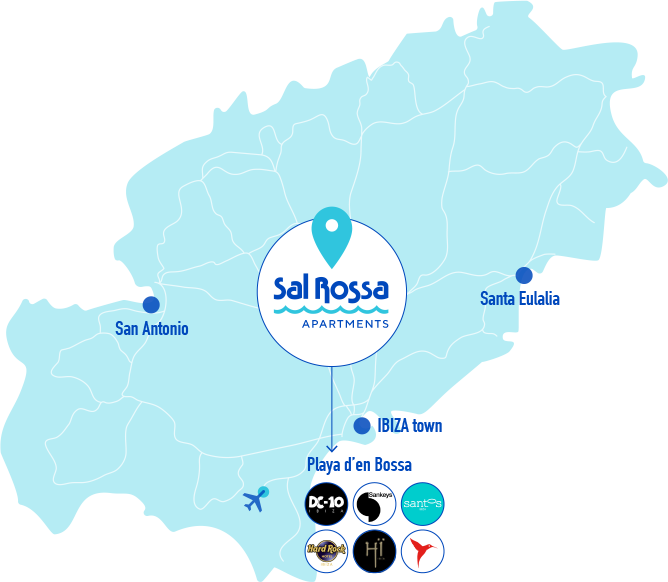
Special Deals
Check out the best deals only on our official website
Only here will you secure the best conditions for your booking and enjoy your holiday in Ibiza without paying any hidden extras.
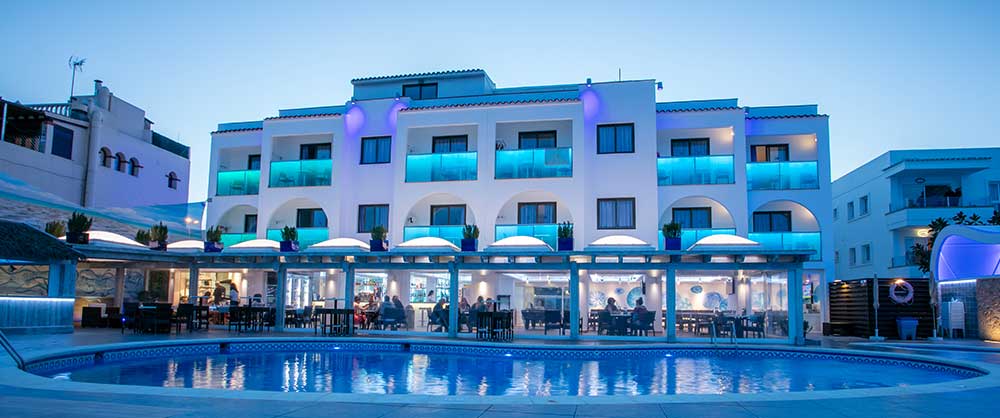
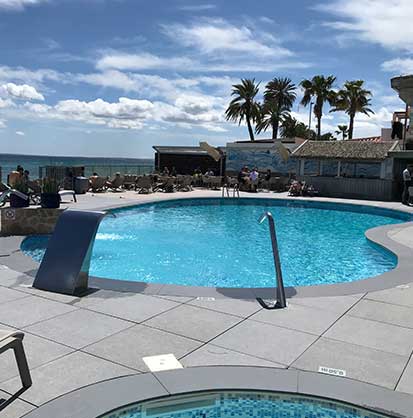
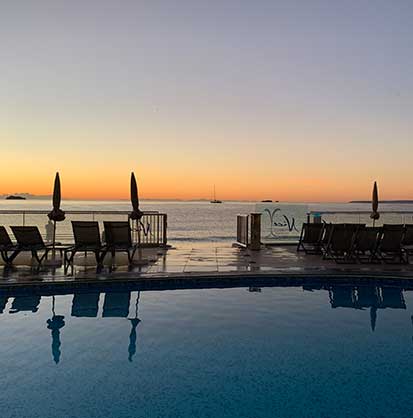
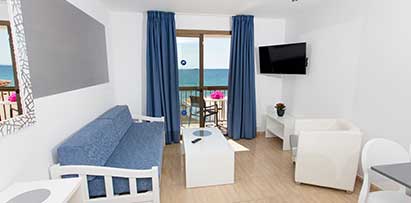
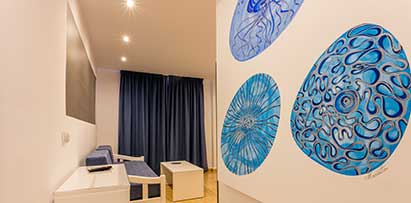
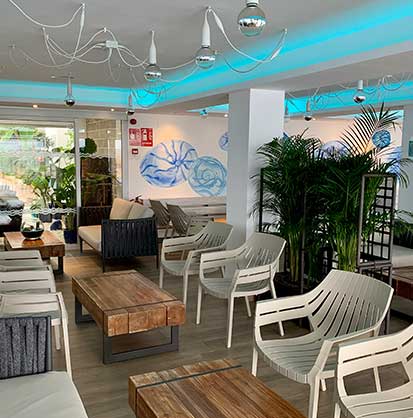
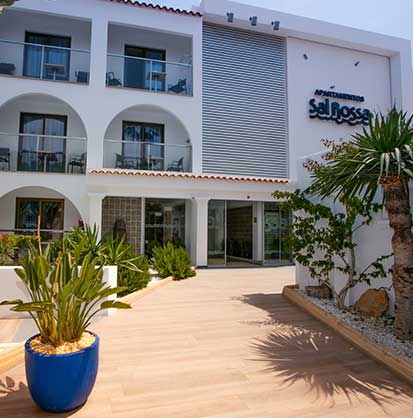
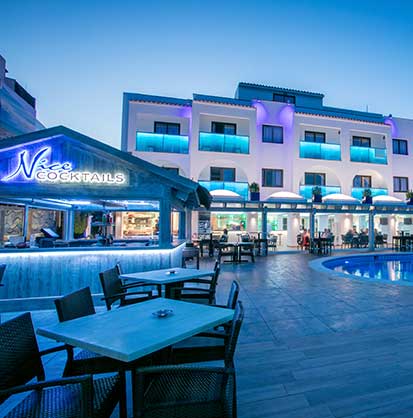
It's our pleasure
What our guests say about us

"A wonderful & beautiful trip to Sal Rossa apartments ! Javier and the team are fabulous! The staff are friendly ! The Apartments are cleaned every day ! The pool is fabulous with views of the sea from the pool! The food is delicious & fresh and well priced !"
Rosemary A
"I love love love this place. Every thing about it. Let’s start with Javier at the front desk! He’s so nice a friendly face."
Monica
"I have been coming to this hotel with my family for 20 years, the staff have always been amazing and will do anything to help, including the people that run the hotel. The rooms are always spotless and the location is just perfect!"
Becci Anderson
"Apartments lovely, spacious and immaculate. Located in a prime position just off the strip but in a quiet area next to the beach...Pool bar and restaurant was really nice.. prices were reasonable"
Jenifer Allinson
"Had a great week here no complaints from us. The Nice restaurant is great value and service and food was good. The place is clean and quiet."
Jackie V
Contact us
We look forward to seeing you
For any information about our apartments, please complete this form.




